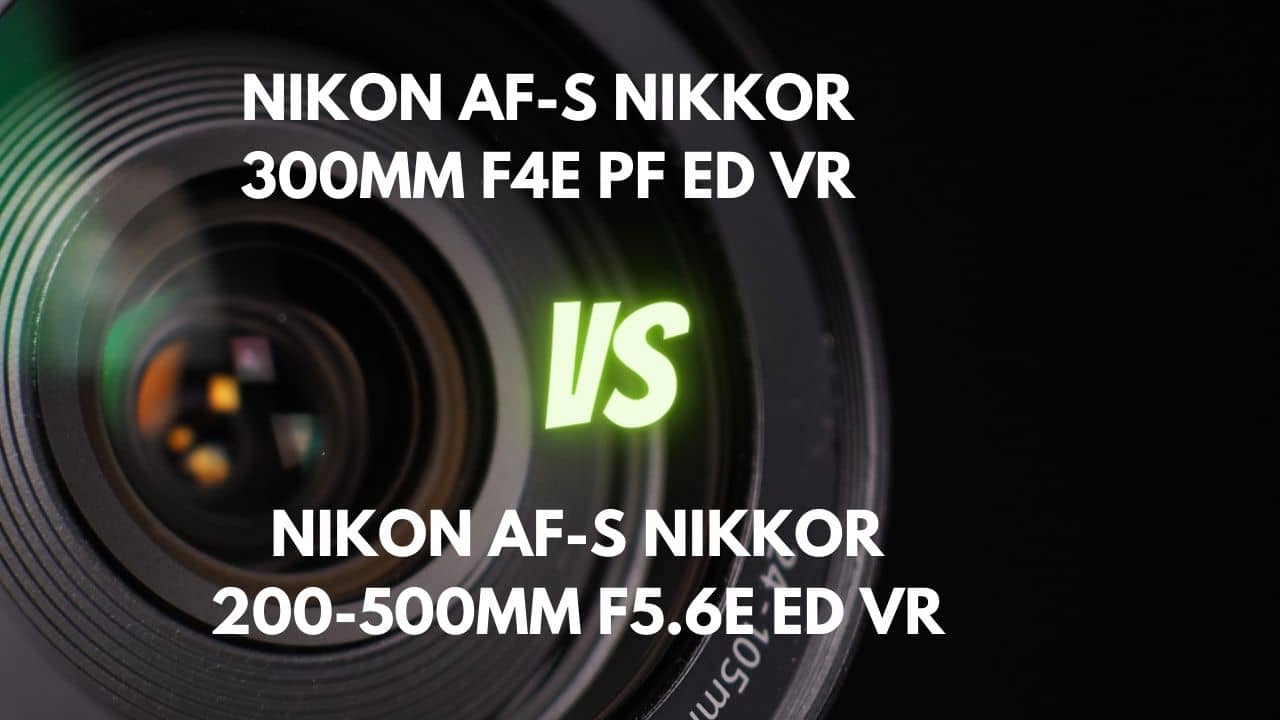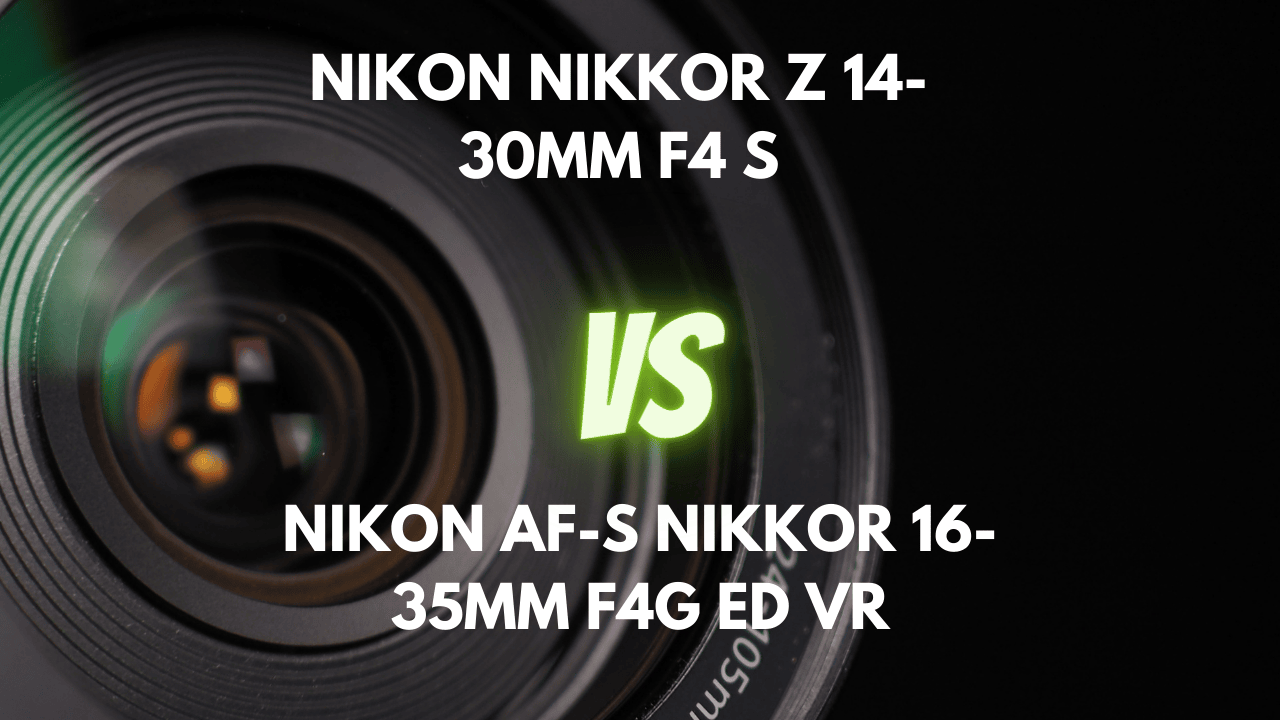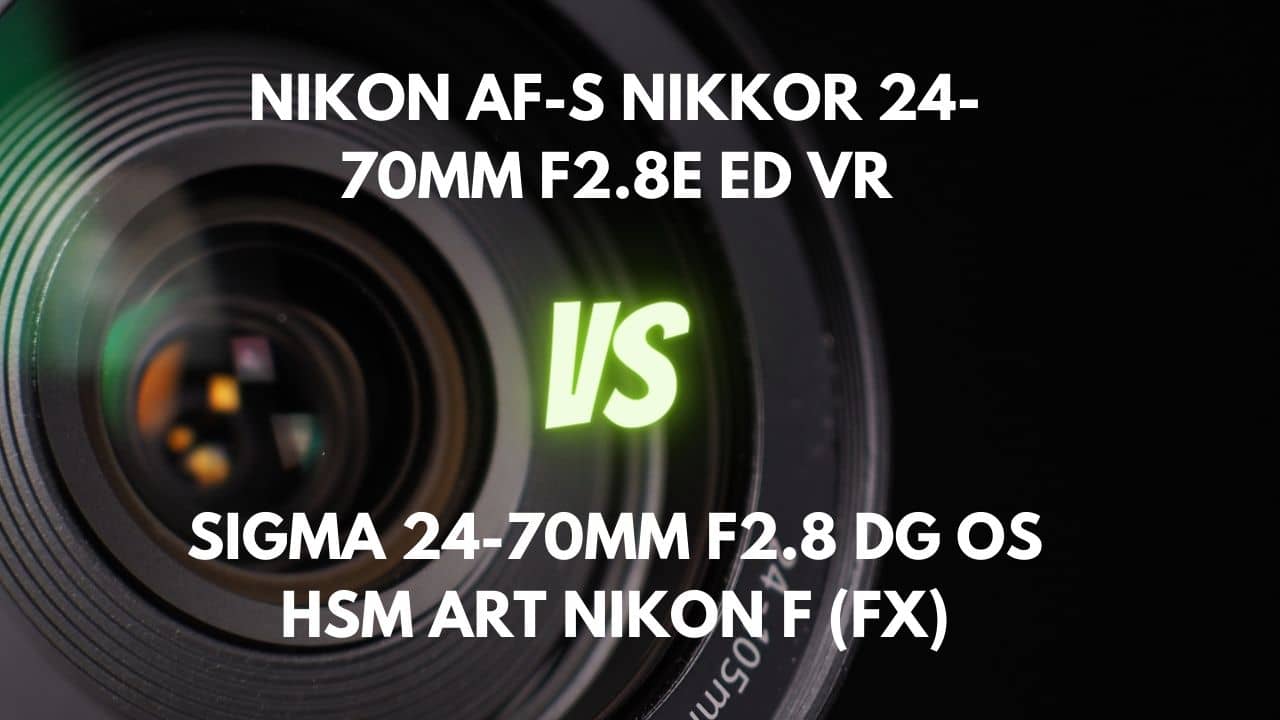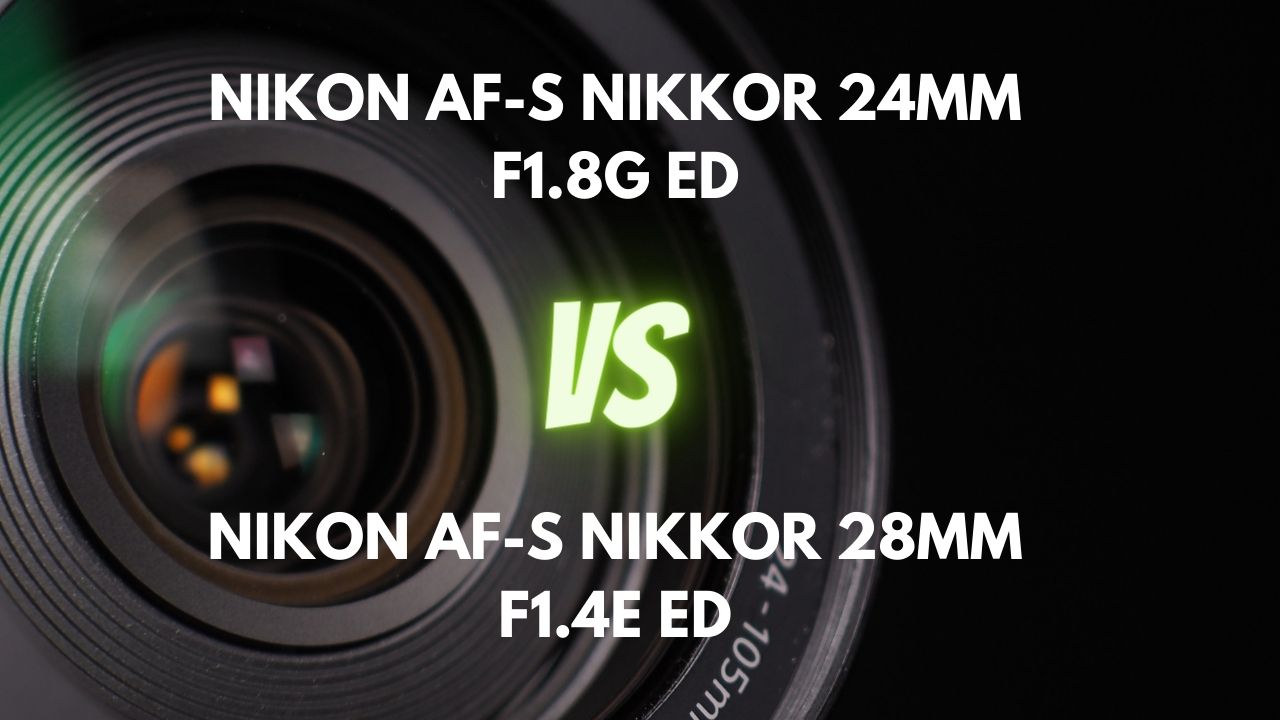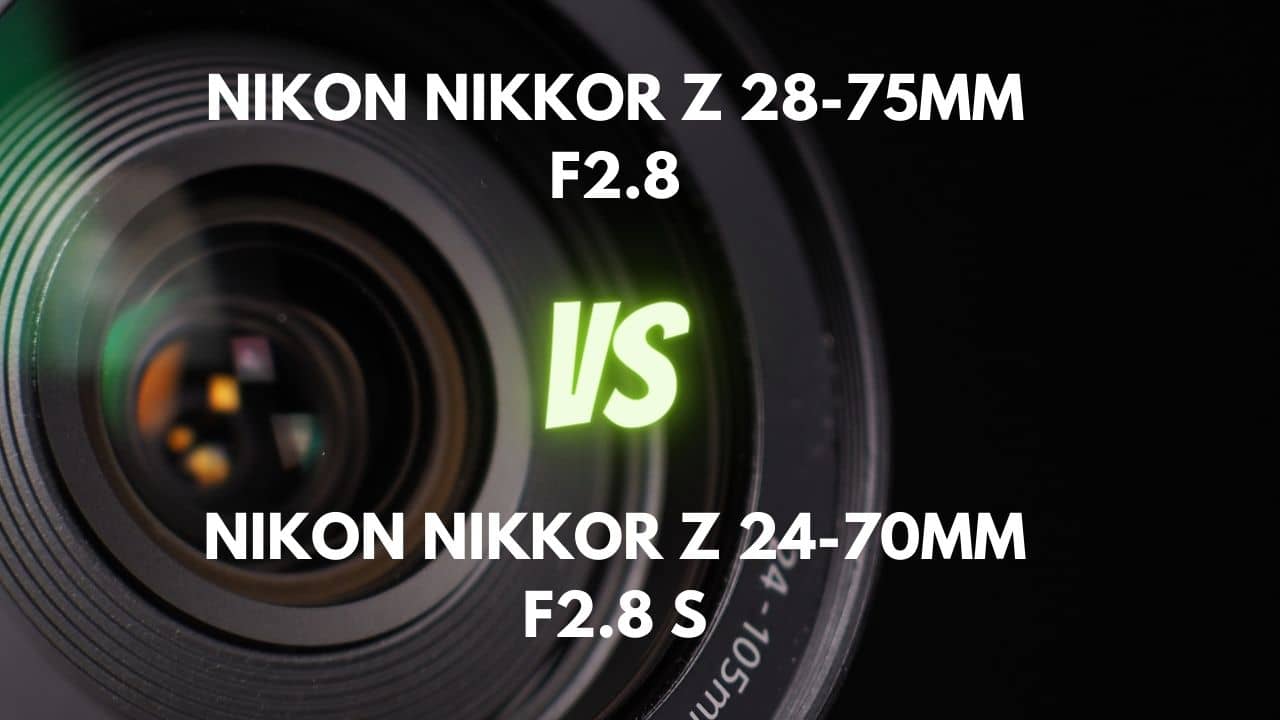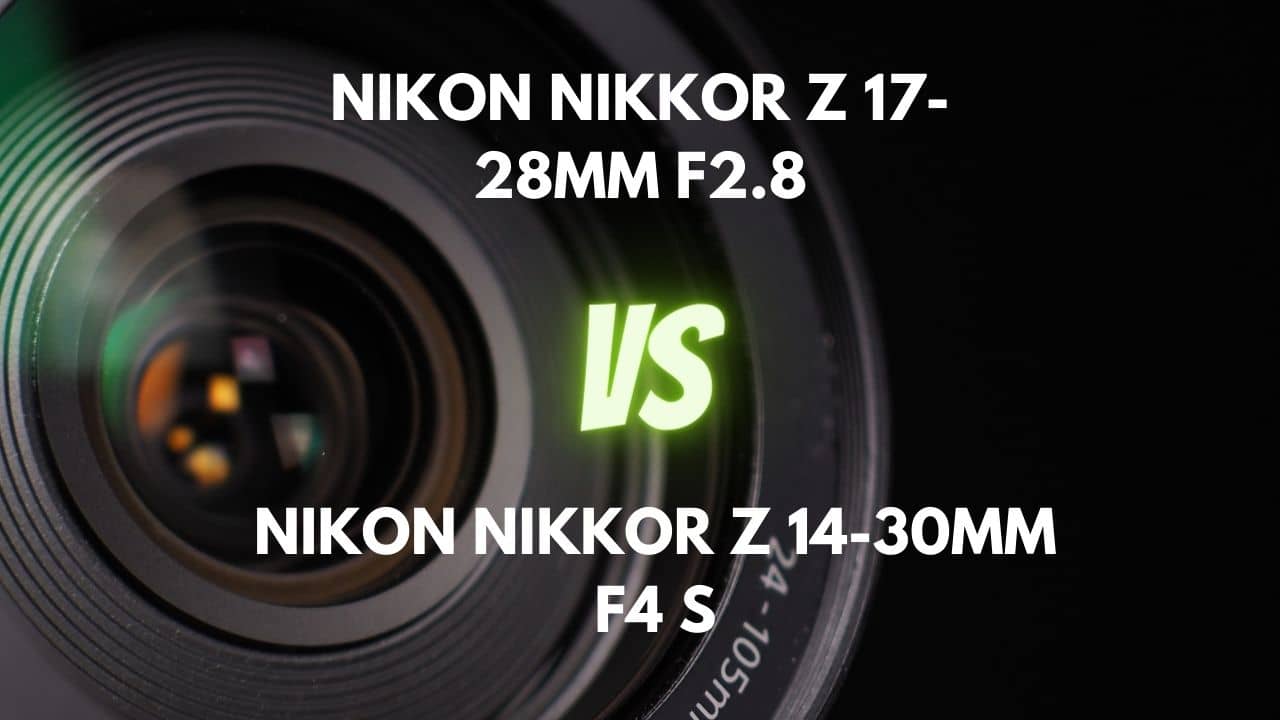Are you in the market for a high-quality wide-angle lens but struggling to choose between the Nikon 16-35mm f/4 and the Tamron 15-30mm f/2.8?
Look no further! In this comprehensive comparison, we’ll dive deep into the world of wide-angle photography, examining the strengths and weaknesses of these two popular lenses across various genres. From landscape and architectural photography to astrophotography and beyond, we’ll explore how each lens performs in terms of sharpness, aberration control, distortion, and more.
Additionally, we’ll consider factors like price, build quality, and ergonomics, ensuring that you’ll have all the information you need to make an informed decision.
So, buckle up and get ready to discover the nuances of these remarkable lenses, and find out which one could be your perfect photographic companion!
Overview
| Nikon AF-S NIKKOR 16-35mm F4G ED VR | Tamron SP 15-30mm F2.8 Di VC USD G2 Nikon F (FX) | |
|---|---|---|
| Max Aperture | F4.0 | F2.8 |
| Aperture Type | Fixed | Fixed |
| Focal Range (mm) | 16-35 | 15-30 |
| Mount Type | Nikon F (FX) | Nikon F (FX) |
| Zoom Ratio (X) | 2.2 | 2 |
When comparing the Nikon 16-35mm f/4 and the Tamron 15-30mm f/2.8, there are a few key differences to consider.
The Nikon 16-35mm lens has a maximum aperture of f/4.0, while the Tamron 15-30mm lens has a wider maximum aperture of f/2.8. This means that the Tamron lens allows more light to enter the camera, potentially resulting in better low-light performance.
However, for wide-angle lenses like these, a larger aperture isn’t always better. Landscape or architectural photography often requires a deeper depth of field.
The focal range is another aspect to consider. The Nikon lens covers a range of 16-35mm, while the Tamron lens has a slightly wider focal range of 15-30mm. The wider angle provided by the Tamron lens could be useful for capturing more of a scene, but the longer reach of the Nikon lens might be more versatile for different shooting situations.
Both lenses have a fixed aperture and are designed for Nikon F (FX) mount cameras. The Nikon 16-35mm lens has a 2.2x zoom ratio, while the Tamron 15-30mm lens has a 2.0x zoom ratio. This means that the Nikon lens offers slightly more flexibility in terms of zoom, which could be an advantage in some shooting scenarios.
Design and Ease of Use
| Nikon AF-S NIKKOR 16-35mm F4G ED VR | Tamron SP 15-30mm F2.8 Di VC USD G2 Nikon F (FX) | |
|---|---|---|
| Diameter x Length (mm) | ⌀82.5×125mm | ⌀98×145mm |
| Weight (gr) | 680 | 1100 |
| Weather Sealing | Yes | Yes |
| Zoom Method | Rotary (internal) | Rotary (internal) |
| Distance Scale | Yes | Yes |
| DoF Scale | No | No |
| Hood Supplied | Yes | Yes |
The Nikon 16-35mm f/4 and the Tamron 15-30mm f/2.8 have some significant differences in terms of physical size and weight.
The Nikon lens has a diameter and length of ⌀82.5x125mm, making it more compact than the Tamron lens, which measures ⌀98x145mm. The Nikon lens also weighs significantly less at 680 grams, compared to the Tamron lens at 1100 grams.
A smaller and lighter lens offers several advantages, such as improved portability, better balance, easier storage, and simpler lens swapping. These factors make the Nikon 16-35mm lens a more convenient option for photographers who value a lightweight and compact setup.
Both lenses feature an internal rotary zoom method, which means that they maintain their physical size while zooming in or out. This design offers consistent balance during shooting, better weather sealing, and a more compact overall size. However, it can also result in increased complexity and weight compared to extending rotary zoom lenses.
In conclusion, if you prioritize portability and balance, the Nikon lens is the superior option due to its smaller size and lighter weight.
Lens Mount and Barrel
The Nikon 16-35mm f/4 features a dull-chromed brass lens mount, complete with a rubber gasket for weather sealing, and a magnesium alloy chassis that contributes to its overall toughness. Its lens barrel is made of plastic, providing a lightweight and weather-resistant design. However, the exterior markings may wear off over time due to the plastic construction.
In contrast, the Tamron 15-30mm f/2.8 has a metal lens mount with a rubber gasket to ensure moisture-resistant construction and prevent infiltration of moisture or rain. The lens barrel consists of a combination of metal and plastic, with a metal exterior band around some areas of the plastic. This design allows for better temperature resistance and durability. The lens does not change in size when zooming, and its G2 design features ergonomic improvements, such as a beveled portion above the zoom ring, which enhances the user experience.
In conclusion, determining which lens mount and barrel is superior depends on your specific needs and preferences as a photographer. If you prioritize weather sealing and a lightweight design, the Nikon 16-35mm lens with its plastic lens barrel and weather-sealed lens mount may be more suitable. However, if you value a robust, moisture-resistant construction and ergonomic design, the Tamron 15-30mm lens with its metal and plastic lens barrel and weather-resistant lens mount could be the superior choice.
Weather Sealing
When examining the weather sealing of the Nikon 16-35mm f/4 and the Tamron 15-30mm f/2.8, we can see distinct differences in their protective measures.
The Nikon lens offers a rubber gasket at the lens mount, providing some degree of weather sealing. Its build quality presents a solid plastic construction combined with a weather-sealed metal lens mount.
In contrast, the Tamron lens boasts comprehensive weather sealing, featuring leak-resistant seals throughout the lens barrel, gaskets at the lens mount area and other critical locations, as well as internal seals at the rings, switches, and front of the barrel. Additionally, the Tamron lens has a fluorine coating on the front element to resist dirt, dust, and water drop adherence, making cleaning a breeze.
Weather sealing is important for ensuring durability and performance in various weather conditions. Fully weather-sealed lenses offer better protection against dust, moisture, and light water splashes, making them ideal for outdoor photography in diverse conditions.
Considering the weather sealing features of both lenses, the Tamron lens appears to be the superior choice. Its comprehensive weather sealing ensures better protection for the lens against various environmental elements, providing added durability and performance in challenging conditions. This makes the Tamron lens a more reliable option for photographers who frequently shoot outdoors or in unpredictable weather. However, if weather sealing is not a top priority for your photography needs, the Nikon lens may still be a suitable option.
Rings
Comparing the rings of the Nikon 16-35mm f/4 and the Tamron 15-30mm f/2.8, we can observe notable differences in their design and functionality.
The Nikon lens features 2 rings: a zoom ring close to the camera body and a focus ring towards the front of the lens. Both rings are coated with ridged rubber for a secure grip and are well damped. When adjusting the zoom on this lens, the zoom ring moves fluidly through a quarter of a turn, taking you from the wide-angle 16mm setting to the 35mm focal length, while the focus ring rotates through a quarter of a turn for focus distance adjustments.
Unfortunately, some copies of this lens have reported play between the focus ring and the internal gears. The focus ring only turns 50 degrees, which is short but sufficient for accurate focus at the long end. The lens also includes a recessed distance scale but lacks depth-of-field markings.
On the other hand, the Tamron lens has a zoom ring located further out, while the focus ring is positioned between the zoom ring and the camera body. Both rings have a rubberized texture for easy grip and tactile feedback. The zoom ring is wider than the focus ring, has set marks at specific focal lengths, and rotates smoothly with no play.
The focus ring has a nice amount of dampening and resistance for precise focusing. There is a windowed distance scale but no depth-of-field indicator. The Tamron lens offers a 113-degree focus ring rotation, which is ideal for precision work even near the minimum focus distance at 30mm.
In conclusion, the Tamron lens appears to have superior ring design and functionality. Its rings provide better ergonomics, precision, control, and build quality compared to the Nikon lens. Additionally, the 113-degree focus ring rotation on the Tamron lens offers improved precision for fine adjustments, making it a better choice for photographers seeking smooth, accurate focus and zoom control.
Switches/Buttons
When comparing the switches and buttons on the Nikon 16-35mm f/4 and the Tamron 15-30mm f/2.8, we can see distinct differences in their design and placement.
Located behind the focusing ring on the lens barrel, the Nikon lens features two slider switches. The upper switch is used to control the focus mode, while the lower one allows you to quickly toggle the VR II stabilization on or off. These switches provide quick access to essential settings without having to navigate through camera menus.
In contrast, the Tamron lens has 2 switches on the left side: one for focus (AF versus MF) and the other for VC (on versus off). The AF/MF switch is positioned higher on the lens than on Nikon or Canon lenses, making the VR/IS ON/OFF switch more easily reachable. The switches on the G2 lens are raised and more defined, offering a convenient location and easy accessibility.
The two-position switches click assuredly into place and can be used even with light gloves. While the lens doesn’t offer the ability to customize the autofocus distance range, the TAP-in Console accessory can be employed to update the lens’s firmware and personalize focus position and VC control. The design of the switches and buttons on the Tamron lens demonstrates a commitment to both aesthetics and functionality.
In conclusion, the Tamron lens appears to have a superior switches and buttons design compared to the Nikon lens. Its raised, well-defined switches are more conveniently located and user-friendly, providing quicker and more accessible control over essential settings.
The compatibility with the TAP-in Console accessory for customization further enhances the Tamron lens’s appeal, making it an excellent choice for photographers seeking a balance of design and functionality in their lens switches and buttons.
Filter Thread
When examining the filter threads of the Nikon 16-35mm f/4 and the Tamron 15-30mm f/2.8, there are notable differences in their designs and compatibility with filters.
The Nikon lens boasts a 77mm filter thread, which is quite large and ideal for landscape photography. The filter thread is made of plastic on the outside, providing a lightweight and resilient design that can recover from accidental drops.
The 77mm filter thread is compatible with various filters, such as ND, IR, and CPL filters, making it an attractive option for photographers who frequently use filters. In order to safeguard the lens and optimize image quality, it’s highly recommended to use high-quality filters such as the Hoya multicoated HD3 UV or the B+W 77mm 010.
On the other hand, the Tamron lens lacks a standard filter thread, rendering traditional screw-on filters unusable. Instead, it comes with a rear drop-in filter holder for gel filters, offering a more sophisticated solution. The rear element of the lens moves in and out when zooming but does not rotate, simplifying filter usage with the rear holder.
While the inability to use front filters is a common limitation of fast ultra-wide-angle zoom lenses, workarounds exist for photographers willing to modify lenses or filter holders.
In conclusion, the Nikon lens has a superior filter thread design compared to the Tamron lens. The 77mm filter thread is versatile and compatible with a wide range of filters, making it a more practical option for photographers who use filters regularly. The Tamron lens’s rear drop-in filter holder is an elegant solution but may be less convenient for those who prefer traditional screw-on filters.
Lens Hood
When comparing the lens hoods of the Nikon 16-35mm f/4 and the Tamron 15-30mm f/2.8, distinct differences in design and functionality emerge.
The Nikon lens features an included, reversible lens hood that can be easily stored when not in use. It is compatible with a polarizer filter and has a short design due to the wide angle of view. The Nikon lens shares the same HB-23 lens hood as the Nikon 17-35mm lens, indicating a standard design across multiple lenses.
Conversely, the Tamron lens has a built-in, fixed-position lens hood made of engineered plastic, which is more durable than the flocked design of its predecessor. The lens hood is double-walled, with an inner fixed hood and an outer hood that protects the front element. As the zoom is adjusted, the front element and both lens hoods move together but never extend past the outer dimensions of the lens.
However, the lens hood is not threaded and does not accept standard filters, which may be a disadvantage for landscape photographers. The lens cap is a rigid, friction-fit slip-on design, which is bulkier than typical lens caps but comes with a soft drawstring pouch for protection. For enhanced protection during transport and storage, Lowepro Lens Cases are recommended.
Focusing and Optical Stabilization
| Nikon AF-S NIKKOR 16-35mm F4G ED VR | Tamron SP 15-30mm F2.8 Di VC USD G2 Nikon F (FX) | |
|---|---|---|
| Autofocus | Yes | Yes |
| AF Motor | Silent Wave Motor | Ring-type ultrasonic |
| Rotating Front Element | Does not rotate on focusing | Does not rotate on focusing |
| Min Focus Distance | 0.28m | 0.28m |
| Max Magnification (X) | 0.25 | 0.2 |
| Full-Time Manual Focus | Yes | Yes |
| Focus Method | Internal | Internal |
Focusing Performance
Examining the focusing performance of the Nikon 16-35mm f/4 and the Tamron 15-30mm f/2.8 reveals key distinctions in their autofocus systems and manual focusing capabilities.
The Nikon lens boasts a fast, accurate, and very quiet autofocus system, powered by a Silent Wave Motor (SWM). It can focus in low-light situations without issues, and its autofocus acquisition speed is quick. Additionally, the lens offers manual focus override for greater control. Its focusing speed is impressive, taking only 0.5 seconds to go from close to infinity. However, some copies of the lens may exhibit play between the focus ring and internal gears, and audible clacks and snaring sounds might be heard during focusing.
On the other hand, the Tamron lens features fast and virtually silent autofocus performance, thanks to its Tamron USD motor. It consistently achieves focus accuracy and boasts a 0.35-second focus time from infinity to 0.3m. The lens provides sharp images hand-held at shutter speeds as low as 1/8 sec at 30mm.
Its autofocus acquisition speed is good, and it offers manual focus override with a smooth focus action. The lens maintains a constant length with its internally focusing design, and the front element does not rotate during focusing. The lens is barely audible from the outside, but focus movement during recording starts and stops with a clack. The lens exhibits some focus breathing on the wide end, which may be an issue for videographers and those critically framing a scene.
In conclusion, both the Nikon and Tamron lenses showcase excellent focusing performance, but the Tamron lens has a slight edge due to its faster autofocus and higher consistency. The Nikon lens performs admirably, but the play between the focus ring and internal gears and the audible focusing sounds may be drawbacks for some photographers.
Optical Stabilization
Diving into the optical stabilization of the Nikon 16-35mm f/4 and the Tamron 15-30mm f/2.8, we discover unique attributes in each that contribute to their overall performance.
The Nikon lens features a Vibration Reduction II system, which Nikon claims can provide an advantage of up to 4 stops. Extensive field testing has demonstrated that with a still subject, the Nikon 16-35mm f/4 lens can enable shutter speeds that are up to 3 stops longer at the long end of the focal range and up to 2 stops longer at the shorter end.
While VR does increase shutter delay in daylight, it allows for hand-holding at least 1.5 stops slower than the focal length would allow. The VR (Vibration Reduction) operation operates quietly, and the lens is equipped with a switch that enables you to quickly turn the feature on or off. The lens has only one mode of stabilization and does not produce any noise when using VR.
In contrast, the Tamron lens incorporates image stabilization or Vibration Compensation (VC) as Tamron calls it, which is effective and useful in handheld shooting, particularly in low light situations where slower shutter speeds are required. It promises up to 4.5 stops of assistance and has been rated as the highest rated wide-angle zoom stabilizer by the Camera & Imaging Products Association of Japan.
The VC system is very quiet and barely audible during operation, and it comes with only one mode of stabilization. The lens stabilizes everything well without an optical cost, and there is a limit to how low of a shutter speed one can personally handhold. At 400mm and 1/13th second shutter speed, one can consistently achieve good results, which is equivalent to 5 stops of stability.
In conclusion, both the Nikon and Tamron lenses provide valuable optical stabilization, but the Tamron lens stands out with its more effective Vibration Compensation system, boasting up to 4.5 stops of assistance and an impressive performance at 400mm and 1/13th second shutter speed.
While the Nikon lens performs well with its Vibration Reduction II system, the Tamron lens offers a more powerful and reliable optical stabilization experience, making it the superior choice for photographers requiring additional stability in their work.
Image Quality
| Nikon AF-S NIKKOR 16-35mm F4G ED VR | Tamron SP 15-30mm F2.8 Di VC USD G2 Nikon F (FX) | |
|---|---|---|
| Special Elements | 2 ED glass elements, 3 aspherical lenses and Nano Crystal Coat | 2 eXpanded glass molded aspherical + 1 molded glass aspherical + 3 aspherical elements, Anti-reflection eXpand + BBAR + fluorine coatings |
| Diaphragm Blades | 9 | 9 |
| Circular Aperture | Yes | Yes |
Aberration
When examining the aberration performance of the Nikon 16-35mm f/4 and the Tamron 15-30mm f/2.8, we find distinct differences in how each lens handles chromatic aberration, coma, and spherical aberration.
One of the noteworthy features of the Nikon lens is its exceptional control of chromatic aberration, which helps to effectively eliminate any signs of lateral chromatic aberrations. Even when shooting in RAW format, this type of distortion is hardly noticeable, and with modern Nikon digital SLR bodies, JPEG images can be automatically corrected for chromatic aberration. Furthermore, the lens produces negligible levels of coma and spherical aberration, resulting in an overall excellent optical performance with minimal aberrations.
On the other hand, the Tamron lens does exhibit some noticeable lateral chromatic aberration, particularly in challenging scenarios. Purple fringing and some magenta and green chromatic aberration may be observed. However, this can be easily corrected in raw images using software like Lightroom or ACR’s one-click Remove Chromatic Aberrations.
When it comes to controlling coma distortion, the Tamron lens performs quite well, producing clear and crisp star points with minimal distortion or deformation of shapes, even when located near the edge of the frame. As for spherical aberration, it produces a hazier image quality at the widest apertures, but stopping down one to two stops generally removes this aberration.
In conclusion, while both lenses showcase their unique strengths, the Nikon lens takes the lead in aberration control, providing exceptional chromatic aberration control and minimal coma and spherical aberration.
Although the Tamron lens can still produce high-quality images with post-processing correction for chromatic aberration and stopping down to address spherical aberration, the Nikon lens offers superior aberration performance straight out of the camera, making it the more appealing choice for photographers who value minimal aberrations in their images.
Sharpness
Analyzing the sharpness of the Nikon 16-35mm f/4 and the Tamron 15-30mm f/2.8 reveals notable differences in their performance at various apertures and focal lengths.
The Nikon lens displays good to excellent sharpness overall, although it exhibits some softness at the edges when shooting at wider apertures. Its center sharpness is generally good, with the sharpest aperture slightly varying depending on the focal length. At 16mm, the center is already pretty sharp wide open, reaching peak sharpness at f/5.6.
The corners may be softer when wide open, but stopping down improves sharpness considerably. When shooting at 35mm, both the borders and corners of the Tamron lens demonstrate good resolution, with little increase in sharpness achieved by stopping down the aperture. The ideal sharpness is achieved at f/8 or f/11, although there is some loss of contrast at f/22.
In contrast, the Tamron lens offers very good sharpness performance overall, with outstanding sharpness at f/8 across the frame. Center sharpness is excellent at maximum aperture, but sharpness towards the edges of the frame only reaches fair levels initially. Stopping down, however, improves performance across the frame.
The sharpest aperture varies with focal length, with f/8 being ideal for sharpness at wider angles and f/4 at the long end. Corner sharpness may be compromised, especially at f/2.8 when shooting at 15mm, but stopping down enhances periphery performance, achieving good sharpness into the full-frame corners at f/8.
In conclusion, both lenses deliver admirable sharpness, but the Tamron lens stands out for its outstanding performance at f/8 across the frame and excellent center sharpness at maximum aperture. While the Nikon lens also offers good to excellent sharpness, the Tamron lens provides a more consistent level of sharpness across the frame when stopped down, making it the superior choice for photographers seeking exceptional sharpness in their images.
Bokeh Quality
When comparing the bokeh quality of the Nikon 16-35mm f/4 and the Tamron 15-30mm f/2.8, both offer pleasing out-of-focus areas, although their performance varies.
The Nikon lens features a 9-segment diaphragm with rounded blades, which contributes to an appealing bokeh. Although having a substantially out-of-focus background is rare with an ultrawide-to-wide zoom, when the opportunity arises, the Nikon lens produces excellent bokeh. This lens may be less likely to create a significant bokeh effect due to its wide-angle nature, but when it does, it adds a creative touch to the image.
On the other hand, the Tamron lens can generate nice blur quality in the out-of-focus areas of an image, particularly when using wide apertures and longer focal lengths. This lens excels in producing crisp star points and exhibits little deformation of shapes even near the edge of the frame at 30mm f/2.8, making it a suitable choice for astrophotography. Like the Nikon lens, the Tamron lens is not primarily designed for bokeh but can still produce appealing results.
In conclusion, both the Nikon and Tamron lenses provide satisfactory bokeh quality when the opportunity arises. Although bokeh is not typically a primary concern for wide-angle lenses, both lenses can add a creative touch to images when the subject is close to the lens, and the background is further away. The Tamron lens stands out due to its impressive performance in astrophotography and might be the better choice for photographers seeking a lens capable of capturing pleasing bokeh while excelling in other areas such as star photography.
Flare/Ghosting
When comparing the Nikon 16-35mm f/4 and the Tamron 15-30mm f/2.8 in terms of flare and ghosting control, both lenses perform well, although with slight differences.
The Nikon lens demonstrates good control over flare and ghosting, only producing visible flare when faced with strong backlight and the sun either inside or just outside the frame. While it’s not entirely immune to flare, it outperforms many other lenses in this aspect.
When stopped down, the lens continues to perform well and displays minimal diffraction effects at f/16 and f/22. Overall, the Nikon lens delivers solid performance in flare and ghosting control without excelling in any particular area.
In contrast, the Tamron lens exhibits excellent control over flare and ghosting, thanks to advanced coating technologies like eBAND, BBAR, and the newly developed AX coating in the G2 version. This lens ranks among the best tested in handling these artifacts, showing little to no signs of ghosting and flare even when shooting against bright light sources.
However, some slight flare effects may still be visible at narrower apertures, and moderately strong flare effects might appear at f/16. The occurrence of flare and ghosting can also depend on factors such as aperture and light angle. Overall, the Tamron lens performs remarkably well in controlling these artifacts.
In conclusion, both lenses perform admirably in controlling flare and ghosting, but the Tamron lens has a slight edge due to its advanced coating technologies. If you are looking for a lens with superior flare and ghosting control, the Tamron lens would be the better choice.
Vignetting
When comparing the Nikon 16-35mm f/4 and the Tamron 15-30mm f/2.8 in terms of vignetting, both lenses display some level of light falloff, but they manage it differently.
While the Nikon lens may display some visible vignetting when shooting with an open aperture at any focal length, this effect is not overly pronounced and can be easily reduced by stopping down the aperture by one or two stops. At 16mm, vignetting is more pronounced, but the lens still delivers excellent center performance even at maximum aperture.
On the other hand, the Tamron lens shows some vignetting at wider apertures, particularly between f/2.8 and f/4. However, this can be easily corrected in post-processing or by stopping down to f/5.6 or beyond. While Canon cameras don’t correct vignetting for third-party lenses, Nikon cameras offer a Vignette Control feature that may help alleviate this issue. As you zoom towards 30mm, the effect lessens, and vignetting is significantly reduced beyond 20mm. Overall, the Tamron lens manages vignetting well, and it doesn’t substantially impact the lens’s overall performance.
In conclusion, both lenses exhibit vignetting to some degree, with the Nikon lens showing slightly more pronounced vignetting at 16mm. However, both lenses allow for easy correction by stopping down the aperture or through post-processing.
Distortion
When it comes to distortion, both the Nikon 16-35mm f/4 and the Tamron 15-30mm f/2.8 have their unique characteristics at different focal lengths.
The Nikon lens displays noticeable barrel distortion at 16mm (5.7%), which can be easily corrected in post-processing using programs like Lightroom and Photoshop. As you zoom in, the distortion decreases, reaching a distortion-free point at 24mm.
However, pincushion distortion starts to emerge as you zoom further towards 35mm, with around 1.3% distortion noticeable in field conditions. Nikon SLRs offer in-camera distortion control for shooting JPGs, but for more flexibility, shooting in Raw format enables easy one-click distortion correction or custom adjustments while preserving edge detail.
In comparison, the Tamron lens exhibits strong barrel distortion at the wide end, which transitions to negligible distortion at around 19mm and then moderate pincushion distortion at the long end. At 15mm, the distortion is about 6.5%, lessening to 1.6% at 22mm and disappearing at 30mm.
Although modern lenses have distortion correction profiles, the Tamron lens’s correction is destructive at the pixel level, and it’s not as optimal as a distortion-free lens. However, distortion can be removed using software like Adobe Lightroom. It’s worth noting that the Tamron lens lacks front filter threads, making it difficult to use a circular polarizer filter, and it also has significant vignetting at 15mm f/2.8.
In conclusion, both lenses exhibit some level of distortion, with the Nikon lens providing slightly better distortion control overall. While the Tamron lens has stronger barrel distortion at the wide end, both lenses can have their distortion corrected in post-processing.
Final Verdict
Taking into account all the factors discussed above, we can conclude that both the Nikon 16-35mm f/4 and Tamron 15-30mm f/2.8 wide-angle lenses have their respective strengths and weaknesses.
For landscape and architectural photography, the Nikon lens offers slightly more flexibility in terms of zoom, better aberration control, and compatibility with a wider range of filters due to its 77mm filter thread. Additionally, it is slightly cheaper, which could be an important consideration for budget-conscious photographers.
For astrophotography and photographers who value build quality and durability, the Tamron lens stands out with its impressive sharpness, especially at f/8 across the frame, advanced weather sealing, and superior optical stabilization. Furthermore, the Tamron lens is an excellent choice for those who prioritize flare and ghosting control.
In terms of ergonomics and functionality, the Tamron lens has an edge, offering better ring design, compatibility with the TAP-in Console accessory for customization, and faster autofocus.
Overall, your specific needs and preferences as a photographer will ultimately determine which lens is more suitable for you. If you prioritize portability, affordability, and better aberration control, the Nikon lens might be a more fitting choice.
However, if you value durability, weather sealing, and superior sharpness, the Tamron lens would be the better option. Both lenses are strong contenders in the wide-angle lens market, and you can’t go wrong with either choice based on your requirements and photographic style.

